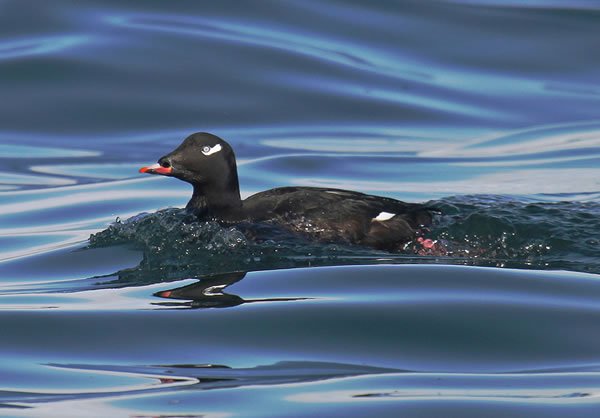Lead Institution(s): University of Wyoming
Project Lead: Eric Anderson
Collaborator(s): James Lovvorn (UW), David Nysewander (WDFW), Joseph Evenson (WDFW), Dan Esler (SFU), Sean Boyd (CWS), John Bower (WWU), John Takekawa (USGS), Susan Wainwright-De la Cruz (USGS), Matthew Wilson (USGS), John Bower (WWU), Erika Lok (SFU)
Focal Species: Surf Scoter (Melanitta perspicillata), White-winged Scoter (Melanitta delgandi)
Project Description: For Surf Scoters and White-winged Scoters in Puget Sound, this project assessed (1) whether nutrient acquisition is related to variation in herring spawning activity, and (2) whether alternative prey at key winter foraging sites is inadequate to meet the needs of scoters when spawn is less available. Specifically, at a local scale we evaluated (1) changes in size-adjusted body mass of scoters relative to proximity and timing of spawning events, and (2) the dietary source of scoter reserves, based on stable isotopes and fatty acids, to assess (a) the significance of scoter consumption of spawn to changes in stored reserves and (b) the foraging locations of scoters prior to settling on PSGB spawning grounds (i.e., migrant status). As criteria for evaluating the ability of alternative prey to meet the needs of scoters when spawn is less abundant, we used changes of prey density in benthic surveys and bioenergetics models to estimate seasonal declines in (a) scoter prey and (b) scoter carrying capacity in important winter habitats. At the Regional Scale this project used shoreline surveys (and telemetry of individual scoters via collaborators), to compare seasonal shifts in distributions of scoters to changes in standing stocks of scoter prey at our study sites and the timing, duration, biomass deposition, and location of herring spawning events.
SDJV62 Interim Report FY05
Related Publications
Anderson, E. M., J. R. Lovvorn, D. Esler, W. S. Boyd, and K. C. Stick. 2009. Using predator distributions, diet, and condition to evaluate seasonal foraging sites: sea ducks and herring spawn. Marine Ecology Progress Series 386: 287–302. https://doi.org/10.3354/meps08048
Anderson, E. M., and J. R. Lovvorn. 2012. Seasonal dynamics of prey size mediate complementary functions of mussel beds and seagrass habitats for an avian predator. Marine Ecology Progress Series 467:219-232. https://doi.org/10.3354/meps09943
Anderson, E. M., J. R. Lovvorn, and M. T. Wilson. 2008. Reevaluating marine diets of Surf and White-winged Scoters: Interspecific differences and the importance of soft-bodied prey. Condor 110:285-295. https://doi.org/10.1525/cond.2008.8458
